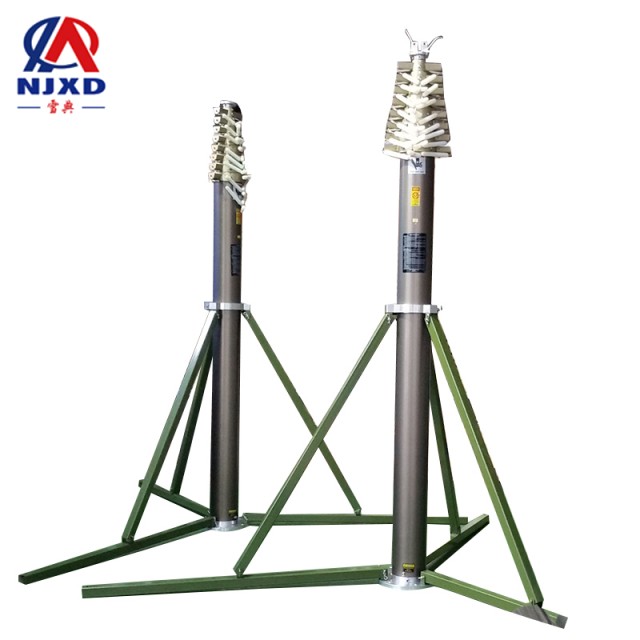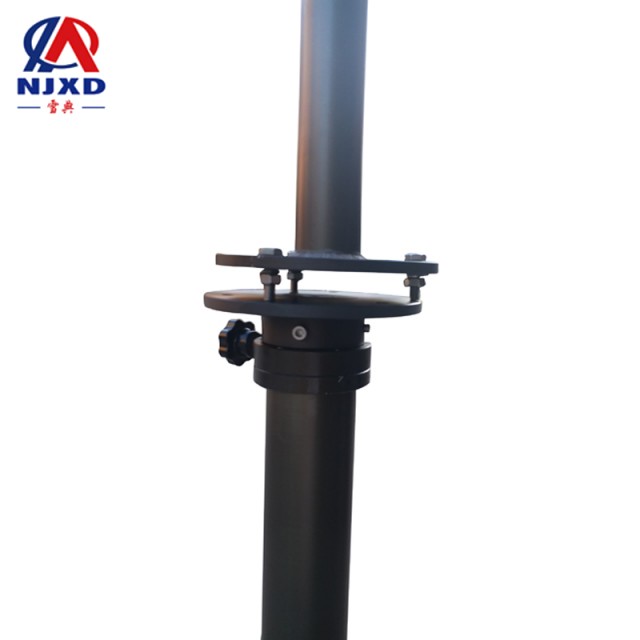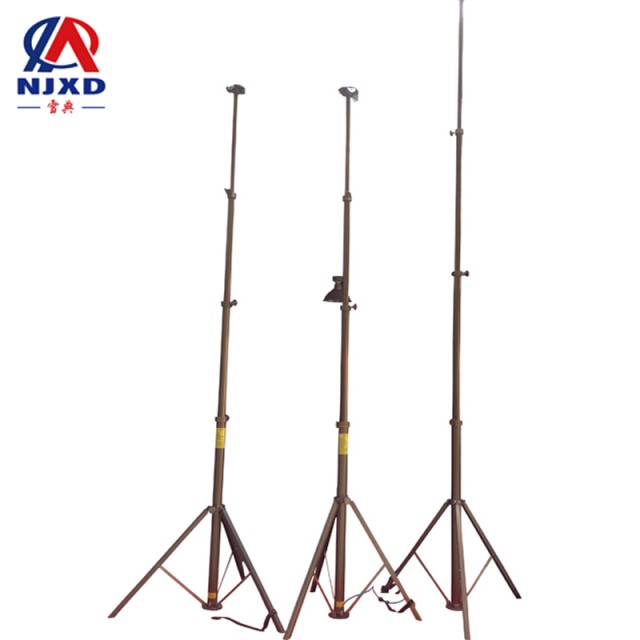NEWS
Tensile strength of lifting equipment
Time:2021-04-23 View:

tensile strength (tensile strength) is the critical value of metal transition from uniform plastic deformation to local concentrated plastic deformation, and is also the maximum bearing capacity of metal under static tensile conditions. Tensile strength is the resistance that characterizes the maximum uniform plastic deformation of the material. Before the tensile sample bears the maximum tensile stress, the deformation is uniform, but after exceeding, the metal begins to shrink, that is, concentrated deformation occurs; For brittle materials without (or very small) uniform plastic deformation, it reflects the fracture resistance of the materials. The symbol is Rm(GB/T 228-1987 old national standard stipulates that the tensile strength symbol is σ B), and the unit is MPa.
Define symbols
During the tensile process of the sample, after the material enters the strengthening stage after the yield stage, the maximum force (Fb) that the material bears during the tensile break is obviously reduced with the size of the transverse section, the stress (σ) obtained by dividing the original cross-sectional area (So) of the sample is called tensile strength or strength limit (σ B), in N/ (MPa). It indicates the maximum ability of metal materials to resist damage under the action of tension. The formula is as follows:
σ=Fb/So
In the formula: Fb -- the maximum force that the sample bears when it is pulled off, N (Newton); So -- the original cross-sectional area of the sample, mm2.
Tensile strength (Rm) refers to the maximum magnitude of stress of the material before breaking. When the steel yield to a certain extent, due to the realignment of internal grains, its resistance to deformation is improved again. Although the deformation develops rapidly at this time, it can only increase with the increase of stress, until the stress reaches the maximum value. Since then, the ability of steel to resist deformation is obviously reduced, and large plastic deformation occurs at the weakest point. Here, the cross section of the specimen is rapidly reduced, and necking occurs until the fracture is broken. The maximum magnitude of stress of steel before tensile fracture is called strength limit or tensile strength.
Unit: N/mm2 (kg force per unit area)
The common method for measuring tensile strength in China is to use Universal material testing machine to measure the tensile/compressive strength of materials.
For brittle materials and plastic materials with unformed necking, the highest tensile load is the fracture load. Therefore, its tensile strength also represents the fracture resistance. For the plastic material forming necking, its tensile strength represents the maximum resistance of affine deformation, and also represents the ultimate bearing capacity of the material under static tensile conditions. For wire rope and other parts, tensile strength is a meaningful performance index. Tensile strength is easy to measure and has good reproducibility. It has a certain relationship with other mechanical performance indexes such as fatigue limit and hardness. Therefore, it is also used as one of the conventional mechanical property indexes of materials to evaluate product quality and process specifications.

Necking phenomenon and tensile strength
Necking phenomenon and significance
Necking is a special phenomenon that the deformation of ductile metal materials focuses on local areas during tensile experiments. It is the result of the combined action of strain hardening (physical factors) and section reduction (geometric factors). The plastic deformation is uniform before the maximum B point of the tensile force-elongation (extension) curve of the metal sample, because the strain hardening of the material increases the bearing capacity of the sample, it can compensate for the decrease of bearing capacity due to the decrease of cross section of the sample. After point B, because strain hardening cannot keep up with the development of plastic deformation, the deformation is concentrated in the local area of the sample to produce necking. df>0 before point m; df<0 after point B. B is the maximum force point and also the start point of local plastic deformation, also known as tensile instability point or plastic instability point.
Practical Significance of tensile strength
1)σ B marks the actual bearing capacity of ductile metal materials, but this bearing capacity is limited to the loading condition of unidirectional stretching of smooth samples, and σ B of ductile materials cannot be used as a design parameter, because the strain corresponding to σ B is far from what is to be achieved in actual use. If the material bears complex stress states, σ B does not represent the actual useful strength of the material. Because σ B represents the maximum bearing capacity of actual parts under static tensile conditions, and σ B is easy to measure and has good reproducibility, it is one of the important mechanical property marks of metal materials in engineering, widely used as product specifications or quality control indicators.
2) for brittle metal materials, once the tensile force reaches the maximum value, the material will break rapidly, so σ B is the fracture strength of brittle materials, which is used for product design, the allowable stress is judged by σ B.
3)σ depends on yield strength and strain hardening index. When the yield strength is constant, the greater the strain hardening index, the higher the σ B is.
4) there is a certain empirical relationship between tensile strength σ B and Brinell hardness HBW and fatigue limit-1.

Material Classification
Tensile strength of tensile film
Membrane under the action of pure tensile force, the ratio of the maximum load that can be borne without fracture to the width of stretch film membrane is usually expressed as N/3cm. It is divided into warp and weft tensile strength.
Warp tensile strength: Tensile strength when stretching along the membrane warp direction.
Weft tensile strength: Tensile strength when stretching along the membrane weft direction.
Tensile strength of concrete
The ultimate strength of concrete under tensile stress is much smaller than the compressive strength of concrete, only 1/17~1/8 of the cube compressive strength. The factors that affect the compressive strength also have corresponding influence on the tensile strength. However, different factors have different influences on compressive strength and tensile strength. For example, the increase of cement dosage can increase the compressive strength more, while the increase of tensile strength is less. The tensile strength of concrete mixed with gravel is larger than that of Pebble, while the influence of aggregate shape on compressive strength is relatively small. Different countries have different methods to measure the tensile strength of concrete. The direct tensile method adopted in China in recent years is a prism specimen of 150mm × 150mm × 550mm poured with steel mold, the two ends are equipped with a center ribbed steel bar with a buried depth of 125mm (the diameter is 6mm) for applying axial tension. The axial tensile test piece is not easy to be centered when it is installed, and the tensile force is easy to be eccentric. Therefore, the splitting experiment is also used to measure the tensile strength of concrete at home and abroad.
Tensile strength of rock
The tensile strength of rock refers to the maximum tensile force that rock specimens can bear per unit area when they are damaged after being subjected to axial tensile stress.
Since rock is a medium with many microcracks, the processing of rock specimens and the variability of experimental environment during tensile strength experiments make the test results not very ideal, there are often some unexpected phenomena, and there is a large deviation between the experimental value and the actual tensile strength. There is a large deviation between the experimental value and the actual tensile strength. People have done a lot of research on its test method and put forward a variety of methods to obtain the tensile strength value. Four test methods of rock tensile strength are introduced as follows: direct tensile method, bending method, splitting method and point load test method.
